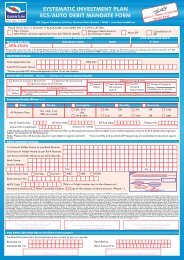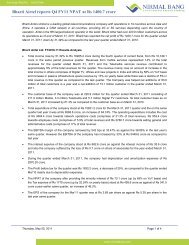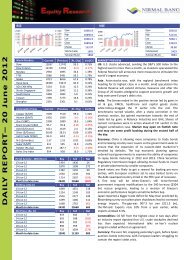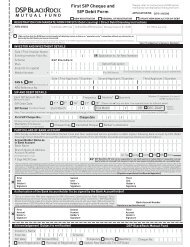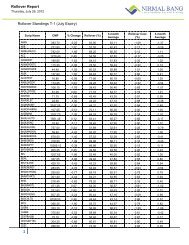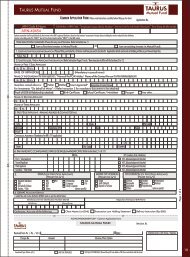Institutional Equities - Online Share Trading
Institutional Equities - Online Share Trading
Institutional Equities - Online Share Trading
You also want an ePaper? Increase the reach of your titles
YUMPU automatically turns print PDFs into web optimized ePapers that Google loves.
Mar-09<br />
Apr-09<br />
May-09<br />
Jun-09<br />
Jul-09<br />
Aug-09<br />
Sep-09<br />
Oct-09<br />
Nov-09<br />
Dec-09<br />
Jan-10<br />
Feb-10<br />
Mar-10<br />
Apr-10<br />
May-10<br />
Jun-10<br />
Jul-10<br />
Aug-10<br />
Sep-10<br />
Oct-10<br />
Nov-10<br />
Dec-10<br />
Jan-11<br />
Feb-11<br />
Mar-11<br />
Apr-11<br />
May-11<br />
Jun-11<br />
Jul-11<br />
Aug-11<br />
Sep-11<br />
FY02<br />
FY03<br />
<strong>Institutional</strong> <strong>Equities</strong><br />
FY04<br />
FY05<br />
FY06<br />
FY07<br />
FY08<br />
FY09<br />
FY10<br />
FY11<br />
FY12E<br />
FY13E<br />
FY14E<br />
FY15E<br />
Exhibit 47: Merchant power tariff<br />
(Rs/KWh) June - Sep 09<br />
12<br />
Rs5.9KWh<br />
10<br />
8<br />
6<br />
4<br />
2<br />
0<br />
June - Sep 10<br />
Rs3.2KWh<br />
June - Sep 11<br />
Rs2.82KWh<br />
Source:IEX<br />
Fuel security is critical issue<br />
Currently, 65% of India’s installed power capacity (112GW) is coal-based and 80% of coal requirement is met<br />
through domestic sources. Going ahead, the commissioning of incremental capacity of 82GW (70% of<br />
incremental capacity addition-thermal based) in the next three years would push up incremental coal imports<br />
to 124mtpa over FY11-15E. We believe that constrained infrastructure at ports and unavailability of railway<br />
wagons to despatch coal to the hinterland would be a major hurdle in the import of coal. Hence, lower coal<br />
imports and moderate growth in domestic coal production would compel power plants to operate at a lower<br />
PLF (plant load factor). Based on our analysis in respect of capacity addition and fuel requirement, the power<br />
plants would operate in the range of 75% to 79% of their capacity.<br />
Exhibit 48: Coal demand for power generation<br />
Merchant prices<br />
FY10 FY11E FY12E FY13E FY14E FY15E<br />
Coal demand (mt) 411 445 484 553 631 719<br />
Generation capacity (mw) 84,198 93,918 102,631 117,737 132,550 147,222<br />
PLF (%) 77.5 76.0 76.0 76.0 77.0 79.0<br />
Operating capacity (mw) 65,254 71,378 78,000 89,480 102,064 116,306<br />
Units produced (mn) 571,623 625,271 683,279 783,848 894,079 1,018,838<br />
Gross calorific value (Kcal/kg) 3,600 3,600 3,600 3,600 3,600 3,600<br />
Heat rate (kWh/ Kcal) 2,588 2,560 2,550 2,542 2,540 2,540<br />
Source: CEA, Energy Statistics, Nirmal Bang <strong>Institutional</strong> <strong>Equities</strong> Research<br />
Average<br />
Exhibit 49: Thermal coal import for power generation<br />
Y/E March (mt)<br />
FY10 FY11E FY12E FY13E FY14E FY15E<br />
Exhibit 50: PLF trend<br />
(%)<br />
81<br />
Coal demand (for power generation) 411 445 484 553 639 728<br />
79<br />
Coal production (for power generation) 367 385 404 429 454 482<br />
Incremental coal production - 18 19 24 26 27<br />
Thermal coal imports 44 60 80 125 185 246<br />
Imports ( adjusted for calorific value) 27 37 49 77 115 153<br />
77<br />
75<br />
73<br />
71<br />
69<br />
Incremental imports - 9 12 28 37 38<br />
Source: CEA, Energy Statistics, Nirmal Bang <strong>Institutional</strong> <strong>Equities</strong> Research<br />
Source: CEA, Nirmal Bang <strong>Institutional</strong> <strong>Equities</strong> Research<br />
21 Infrastructure Sector



